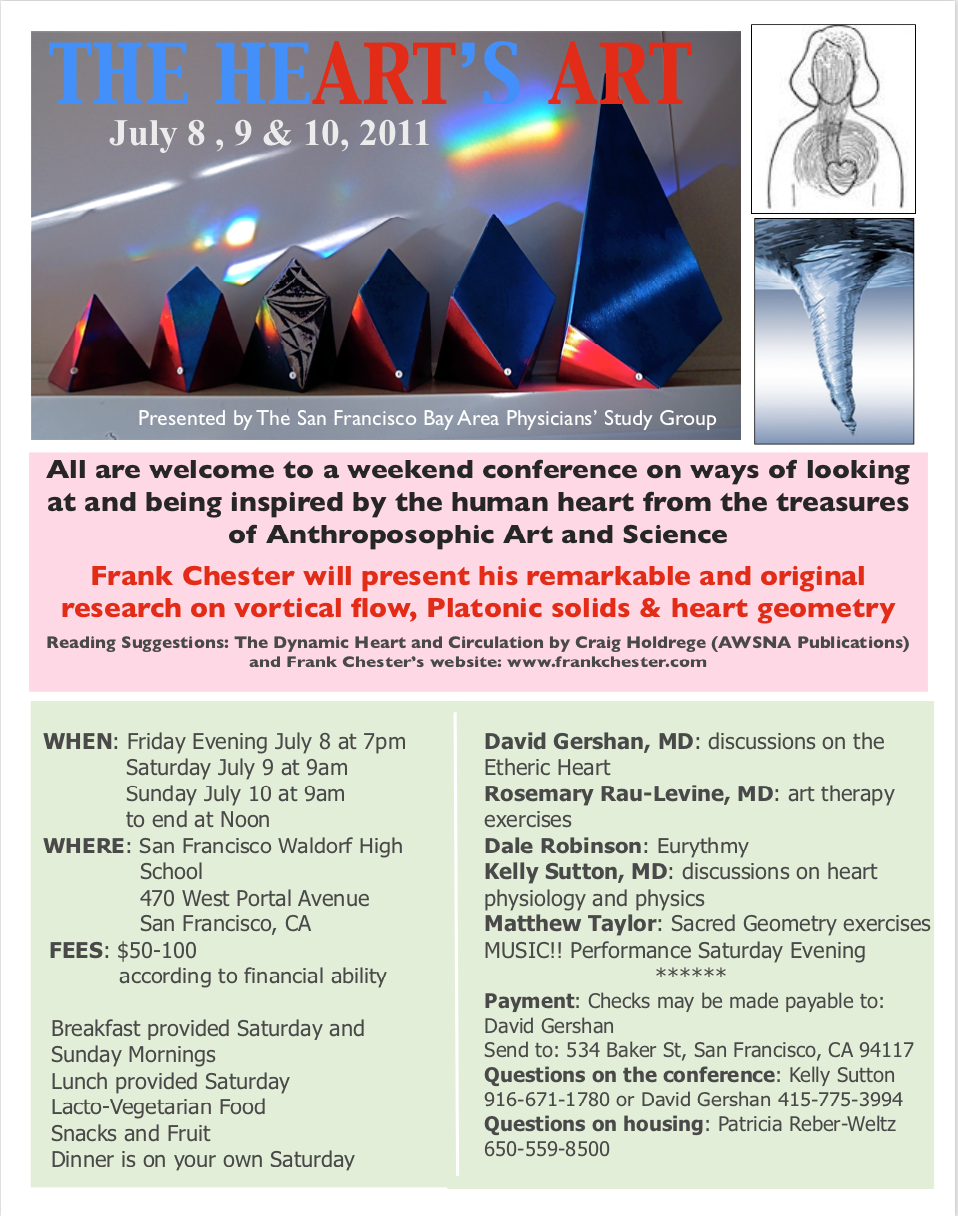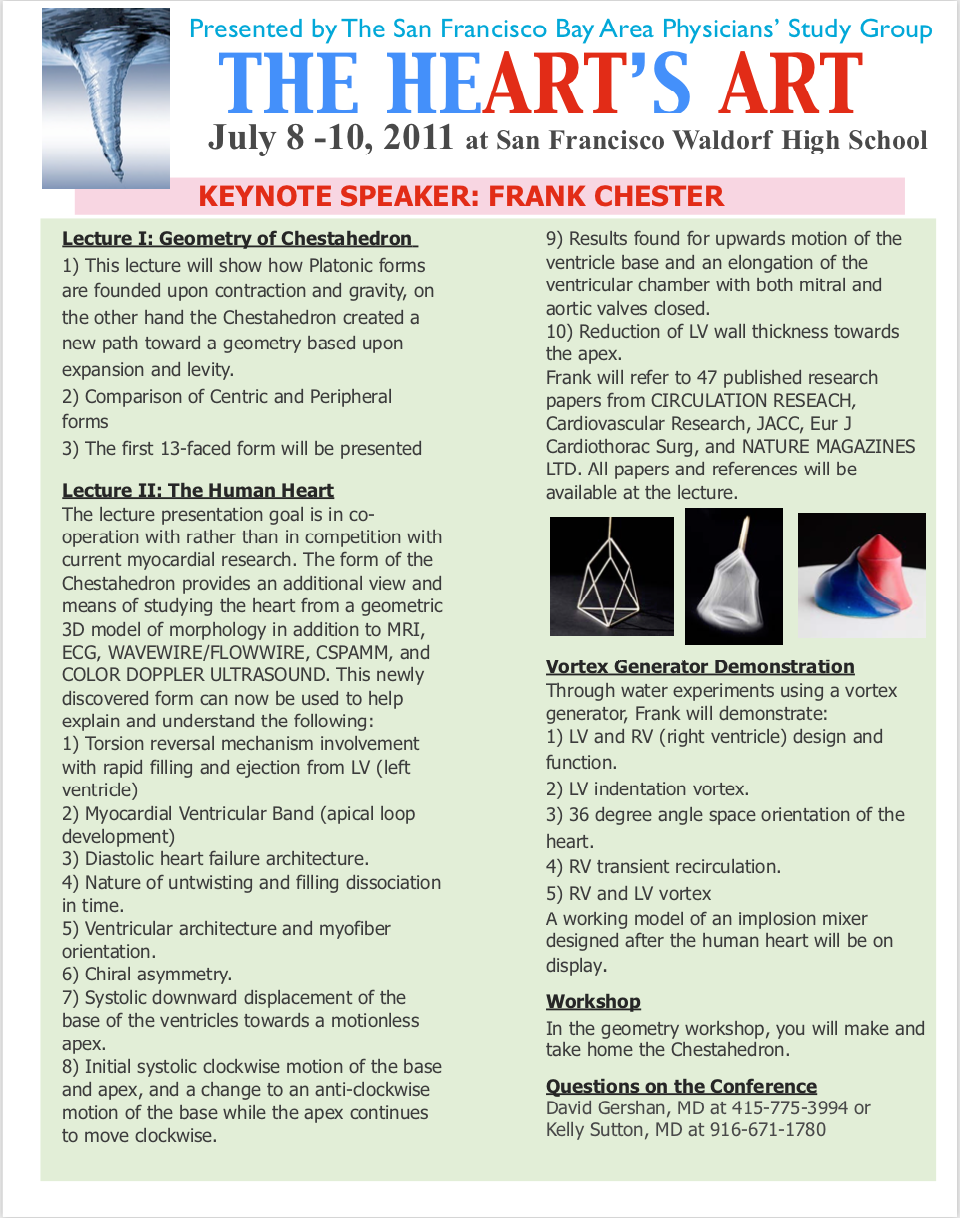The Heart’s Art
On July 8-11, 2001, keynote speaker Frank Chester presented his remarkable and original research on vortical flow, Platonic solids, and heart geometry, in conjunction with sessions led by David Gershan, MD, Rosemary Rau-Levine, MD, Dale Robinson, Kelly Sutton, MD, and Matthew Taylor. This website will showcase a new way of looking at and researching the heart, based on precise geometric morphologies, that complements and recontextualizes current medical research on the heart. Frank’s approach brings a new understanding to the form and function of the most remarkable organ: the human heart.
Keynote speaker: Frank Chester
Lecture I: Geometry of Chestahedron
- This lecture showed how Platonic forms are founded upon contraction and gravity, while on the other hand the Chestahedron (the new form Frank discovered) creates a new path toward a geometry based upon expansion and levity.
- Comparison of Centric and Peripheral forms
- The first 13-faced form was presented
Lecture II: The Human Heart
The lecture presentation goal is in cooperation with rather than in competition with current myocardial research. The form of the Chestahedron suggests an additional, complementary view of, and means of studying the heart, based on a 3D geometric model of heart morphology in addition to MRI, ECG, Wavewire/Flowwire, CSPAMM, and color Doppler ultrasound. This newly discovered form can now be used to help explain and understand the following:
- Torsion reversal mechanism involvement with rapid filling and ejection from LV (left ventricle)
- Myocardial Ventricular Band (apical loop development)
- Diastolic heart failure architecture.
- Nature of untwisting and filling dissociation in time.
- Ventricular architecture and myofiber orientation.
- Chiral asymmetry.
- Systolic downward displacement of the base of the ventricles towards a motionless apex.
- Initial systolic clockwise motion of the base and apex, and a change to an anti-clockwise motion of the base while the apex continues to move clockwise.
- Results found for upwards motion of the ventricle base and an elongation of the ventricular chamber with both mitral and aortic valves closed.
- Reduction of LV wall thickness towards the apex.
Frank will refer to 47 published research papers from CIRCULATION RESEARCH, Cardiovascular Research, JACC, Eur J Cardiothoracic Surgery, and NATURE MAGAZINES LTD. All papers and references will be available at the lecture.
Vortex Generator Demonstration
Through water experiments using a vortex generator, Frank will demonstrate:
- LV and RV (right ventricle) design and function.
- LV indentation vortex.
- 36 degree angle space orientation of the heart.
- RV transient recirculation.5) RV and LV vortex
A working model of an implosion mixer designed after the human heart will be on display.

